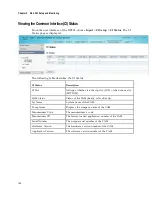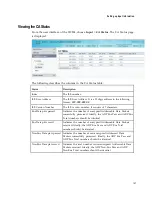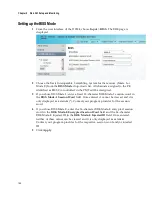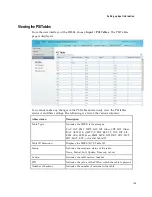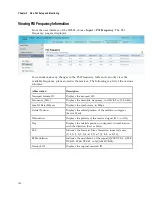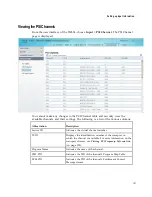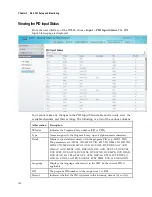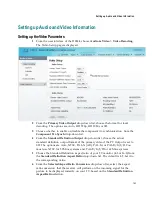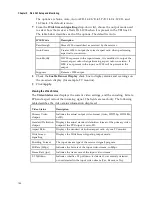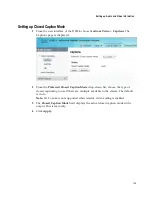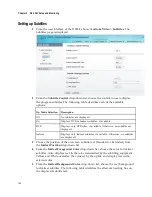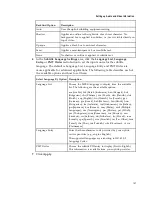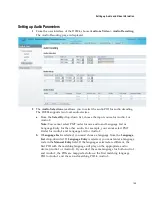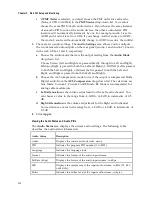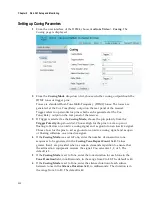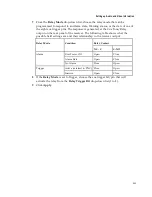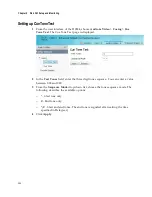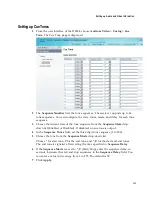
Chapter 5 Web GUI Setup and Monitoring
200
c
If
PMT Order
is selected, you must choose the PMT order for each audio
(None, AUD1 to AUD64) in the
PMT Source
drop-down list. You cannot
choose the same PID for both audio devices. If you choose the same instance
of an audio PID for one of the audio devices, the other audio device PID
instance will automatically increment by one. For example, Audio 1 is set to
AUD1 and Audio 2 is set to AUD2. If you change Audio 1 source to AUD2,
the Audio 2 source will automatically change to AUD3 to resolve the conflict.
3
There are two audio settings. The
Audio Settings
area allows you to configure
the two balanced audio outputs on the rear panel (Audio 1 and Audio 2), known
in the web GUI as 1 and 2, respectively.
a
Choose the audio mode that sets the output mixing from the
Audio Mode
drop-down list.
Choose Stereo (Left and Right are passed directly through to Left and Right),
R-Mono (Right is passed to both the Left and Right), L-MONO (Left is passed
to both the Left and Right), or Mixed (Left is passed to both the Left and
Right, and Right is passed to both the Left and Right).
b
Choose the AC3 compression mode to use if the output is compressed Dolby
Digital audio from the
AC3 Compression
drop-down list. The selections are
Line Mode, Custom 1, Custom 0 or RF Mode. RF Mode is recommended for
analog cable modulators.
c
Left Attenuation
is the volume adjustment for the Left audio channel. You
can choose a value in the range from -6.0 dB to +6.0 dB, in increments of 0.5
dB.
d
Right Attenuation
is the volume adjustment for the Right audio channel.
You can choose a value in the range from -6.0 dB to +6.0 dB, in increments of
0.5 dB.
4
Click
Apply
.
Viewing the Audio Status and Audio PIDs
The
Audio Status
area displays the current audio settings. The following table
describes the audio status information:
Audio Status
Description
Audio
Displays the current audio deocder status.
PID
Indicates the program PID number (1 to 8191).
Language
Indicates the language code.
Format
Indicates the format of the audio input stream.
Bit Rate (kbps)
Displays the bit rate of the audio input stream, in kbps.
SFR
Displays the sample rate of the input audio stream, in kHz (32, 44.1,
or 48 KHz).
Buffer
Indicates the buffer level of the input audio stream, in bytes.
Summary of Contents for D9824
Page 22: ......
Page 26: ...Chapter 1 Introduction 4 On Screen Display support on baseband output NIT Retune Recovery ...
Page 40: ......
Page 164: ......
Page 306: ......
Page 368: ......
Page 370: ......
Page 388: ......
Page 410: ...Appendix C Compliance 388 Declarationof Conformity ...
Page 415: ......

